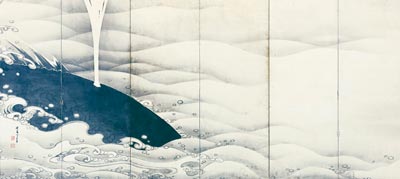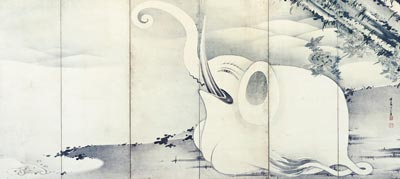Among Jakuchū’s paintings of human figures
are humorous manga-like pieces that make one want to burst out in
laughter. By contrast, some of his vegetable and animal work, such as
his Deer (fig. 7), are painted with amazing realism and detail. Perhaps Jakuchū’s allure can be found in his effortless combination, like a
flavorful cocktail, of the real and the humorous, which usually do not
go together. |
|
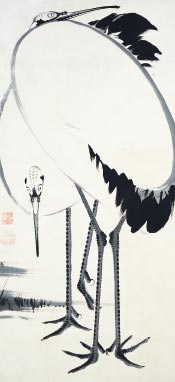 |
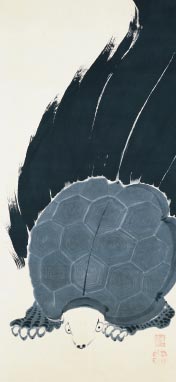 |
| 4 Pair of Cranes and Mythical Turtle, MIHO MUSEUM | |
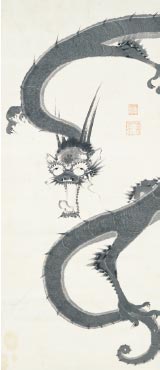 |
 |
5.6 Rain Dragon, Private Collection  7 Deer, Private Collection |
The six-fold screen pair of an elephant and a whale (fig. 8) was discovered
in the Hokuriku region of Japan in 2008. In June of 1728, when Jakuchū was
fourteen, two elephants—a male and female—arrived in Japan from Vietnam.
Although the female died in the port town of Nagasaki, the following year in
March, the male elephant was taken from Nagasaki and headed to Edo (now
Tokyo) overland, the following year in March. Along the way, he was taken to
Kyoto to be shown to the emperor. The curious young Jakuchū perhaps joined
the large crowd along the roadside to see this magnificent animal. The artist may also have actually seen a whale as well. The curious-looking elephant’s ear and the tip of his trunk as well as the whale’s dorsal fins and forceful blow, however, demonstrate that he did not attempt to paint them realistically. This composition of the largest creature on land and in the ocean facing each other attests to his originality and imagination. *The Elephant and Whale Screens will be displayed during the entire duration of the exhibition from September 1 to December 13. |
||
